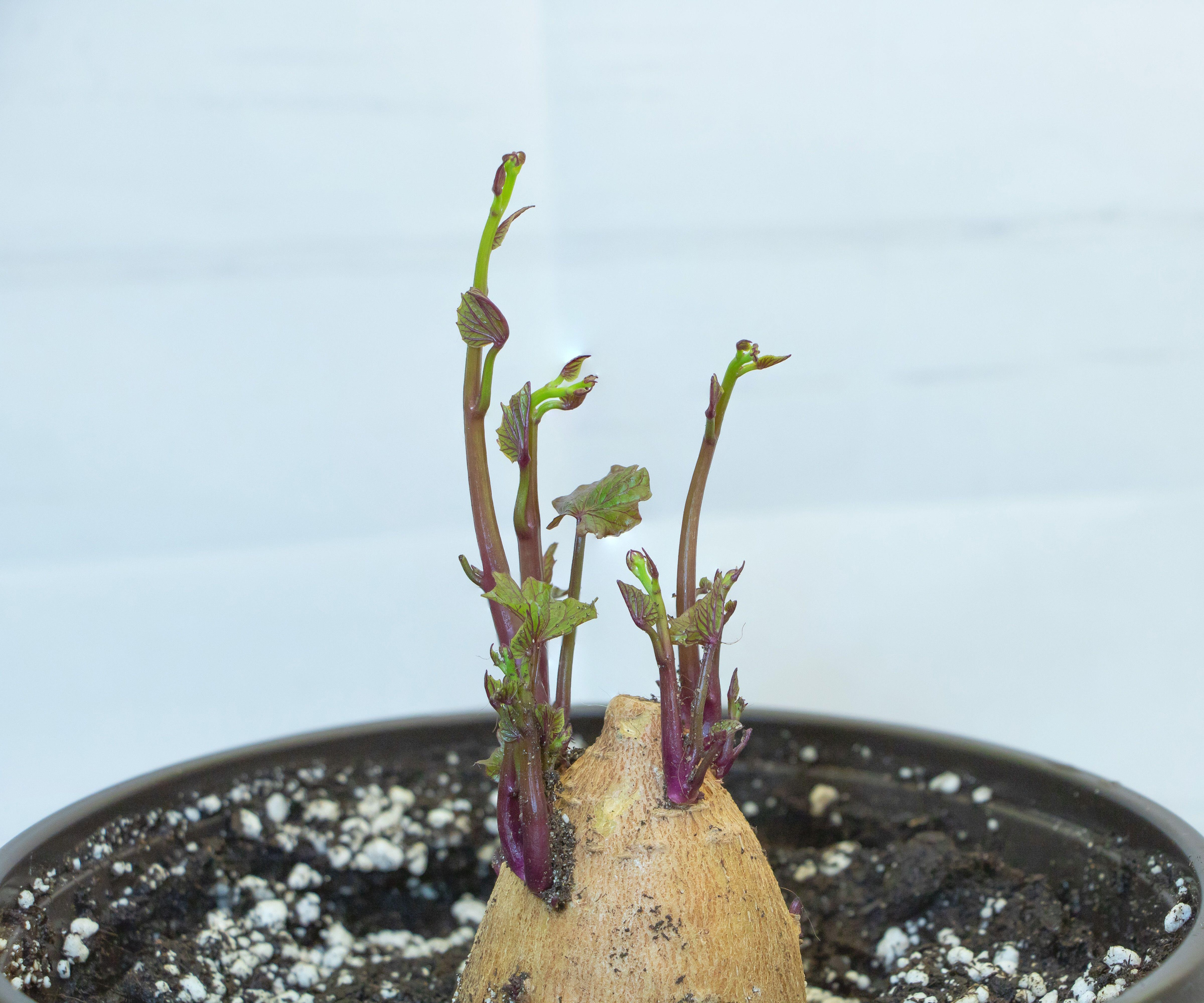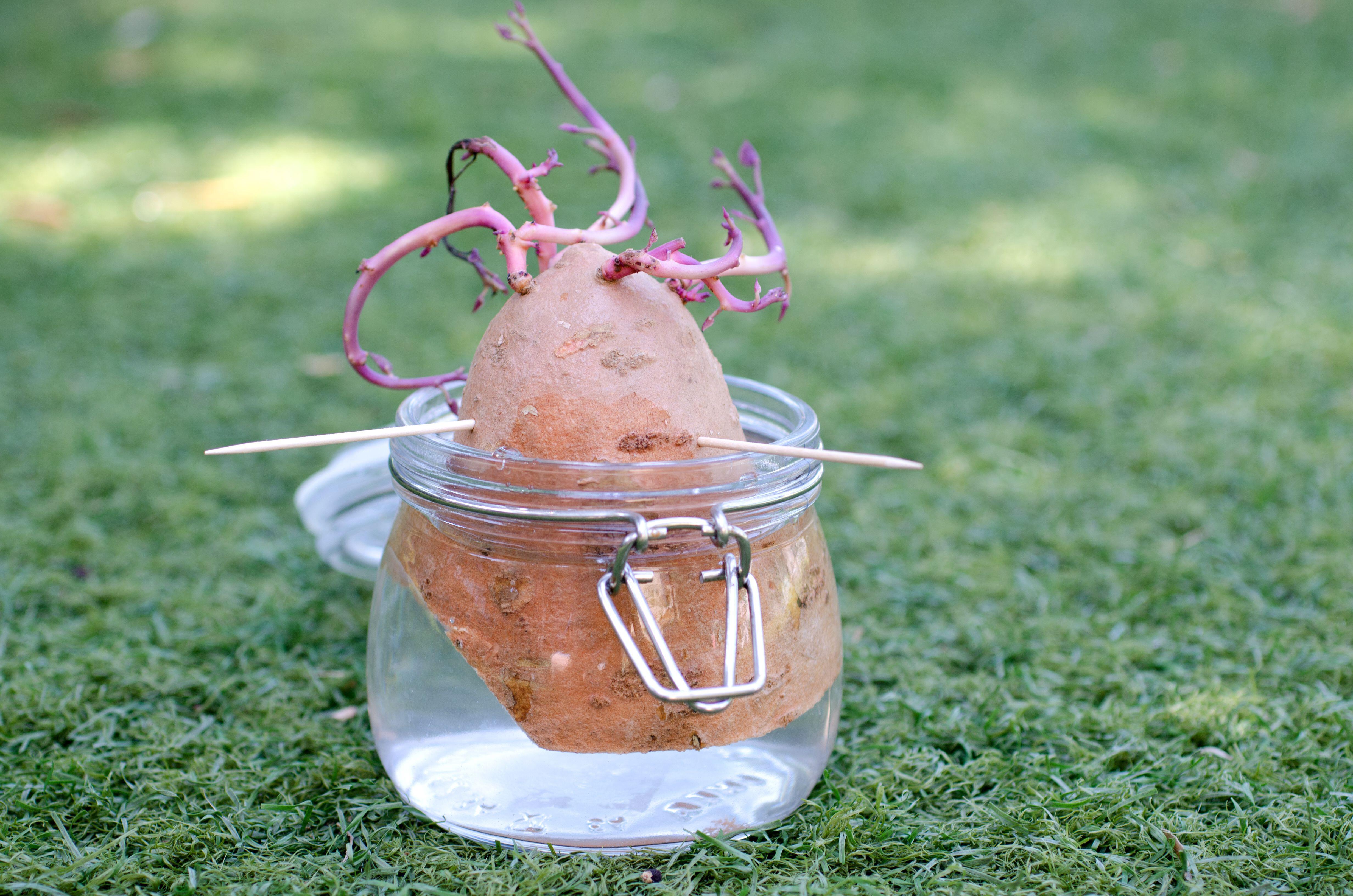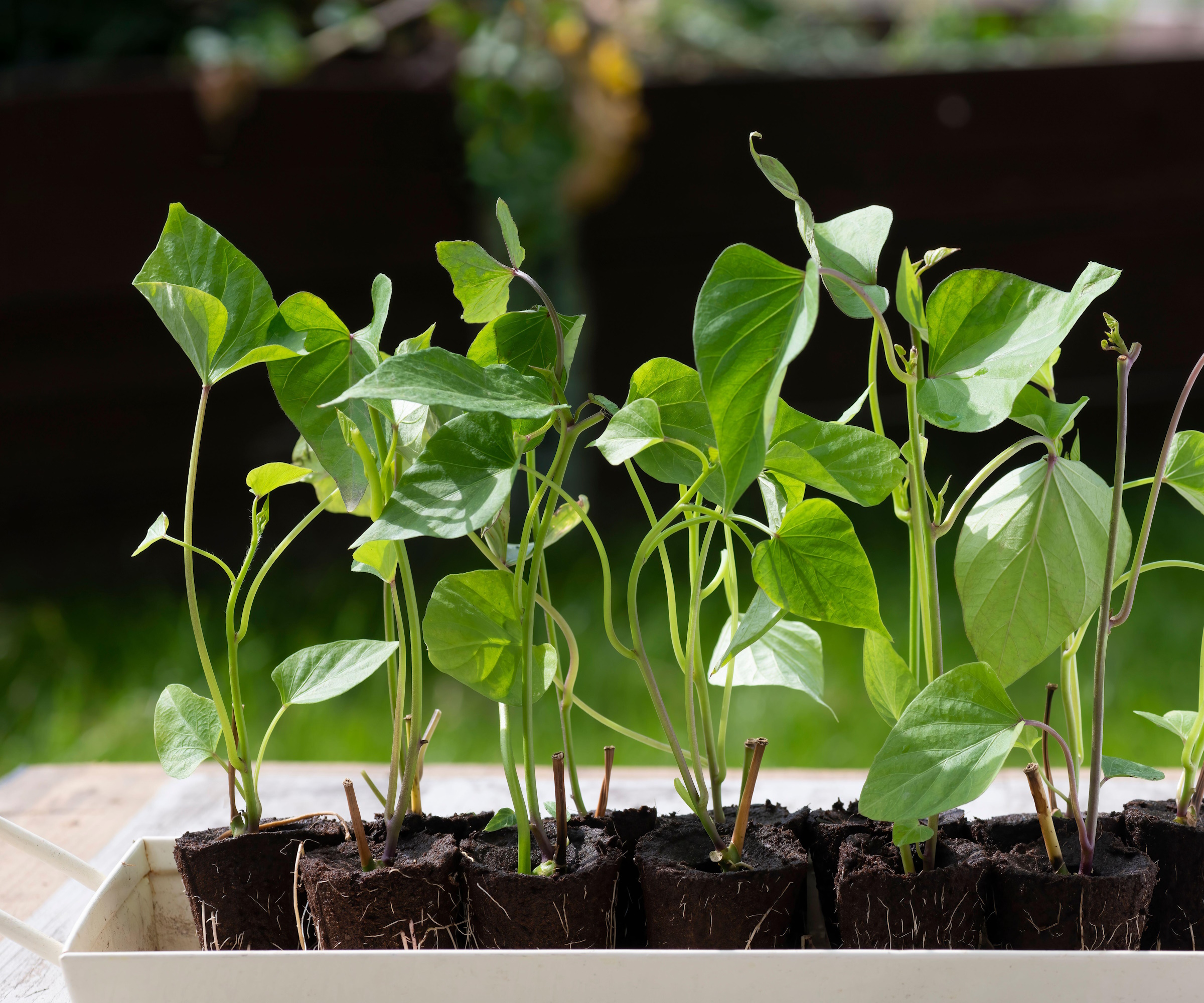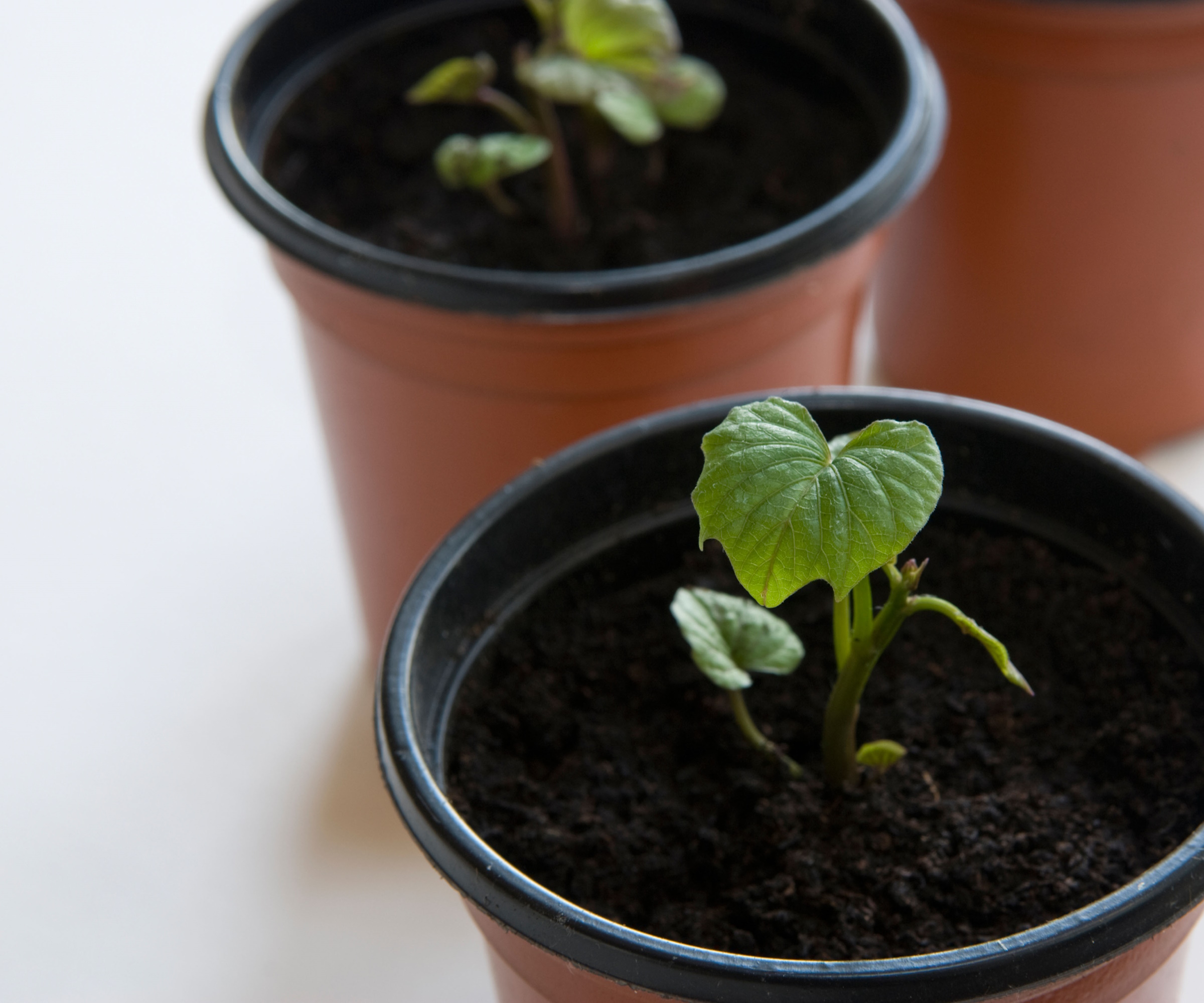
Embarking on the journey of growing a sweet potato vine indoors is a rewarding endeavor that requires precision, care, and a touch of horticultural finesse.
Sweet potatoes are full of vitamin C and are a sweeter tasting alternative to the common potato. The young shoots and leaves on sweet potatoes can also be eaten as greens, which makes them a versatile vegetable to grow.
Follow this step-by-step guide to ensure your sweet potato vine thrives indoors, transforming your space into a verdant haven before harvesting.

How to grow a sweet potato vine indoors - 5 expert steps
Follow these five expert steps to help you grow and enjoy sweet potato vines indoors.
1. Select a sweet potato

Start your sweet potato vine project by selecting a suitable sweet potato tuber, available at local grocery stores or farmers' markets. Opt for organic varieties if possible, as they often have fewer pesticides.
Look for varieties like Beauregard or Centennial, which fare well indoors, or any labeled as field-friendly.
Ensure your sweet potato multiple eyes or small sprouts, indicating its potential for successful growth. Take time to choose a healthy specimen, as this sets the foundation for a thriving indoor vine.
2. Prepare the sweet potato

Once you have your sweet potato, prepare it for cultivation by placing it horizontally and inserting toothpicks or wooden skewers around its midsection and ensuring that each toothpick is near the potato’s sprouting eyes.
These eyes are the points from which your vine will emerge as this will encourage the development of these sprouts and ensure a more even distribution of energy for growth.
This DIY setup costs virtually nothing, as toothpicks and skewers are inexpensive household items. The toothpicks play a crucial role in supporting the sweet potato during the initial growth stages, as shown in the image above, and allow for easy water suspension.
3. Suspend the sweet potato in water

Choose a glass or jar to accommodate the sweet potato, placing it with the suspended end facing down. Fill the container with enough water to cover the lower half of the sweet potato. Position the jar in a warm, well-lit location, changing the water regularly. In a few weeks, sprouts will emerge.
According to Amy Enfield, Senior Horticulturist at ScottsMiracle-Gro, changing the water regularly is essential to 'prevent stagnation and maintain a healthy environment for root development'.
Position the container in a warm location with indirect sunlight. Over the next few weeks, closely monitor the sweet potato for the emergence of sprouts from its eyes. This phase requires patience and attentive observation.
Once the sprouts reach approximately 4-6 inches in length, you're ready to proceed to the next step.
4. Prepare your potting soil and plant

Choose a container that is not only spacious but also has a well-draining potting mix. Invest in a bag of well-draining potting soil, such as the Espoma organic potting soil from Amazon. This prevents water from accumulating around the roots, reducing the risk of root rot. A container that is at least 12 inches deep provides ample room for the sweet potato's roots to establish and expand.
‘Plant the sweet potato sections in the prepared container, burying them about 2-3 inches deep in the soil, says Dr Mike Arnold, professor of landscape and horticulture at the Texas A&M Department of Horticultural Sciences. ‘Ensure that the eyes are facing upward, as this encourages upward growth. If you're using a larger container, space the sweet potato pieces at least six inches apart to allow each vine enough space to spread and grow.’
Adequate spacing between sprouts will allow for optimal growth and development of the sweet potato vines. This investment in quality soil ensures a nutrient-rich environment for your plant.
5. Provide care and maintenance

Place the potted sweet potato vine in a sunny window or under artificial grow lights (which may incur additional costs if you don't already have them). Maintain a warm environment for your sweet potato vine, as they thrive in temperatures between 70-85°F. Adequate humidity is also crucial, so consider misting the plant occasionally, especially in drier indoor climates as well as installing a humidifier from Amazon.
Ensure the plant receives 6-8 hours of sunlight daily. Keep the soil consistently moist but not waterlogged, watering when the top inch feels dry. Fertilize the plant every 4-6 weeks with a balanced liquid fertilizer, such as the Elm Dirt Bloom & Plant Juice liquid fertilizer from Amazon during the growing season.
Provide support, such as stakes or a trellis, as the vines progress. Harvest leaves when the plant is well-established, and consider consulting local gardening experts for personalized advice. This comprehensive care plan ensures the successful cultivation of your indoor sweet potato vine.
As the sweet potato vine grows, guide it by gently training the shoots along a support structure. You can harvest these nutrient-rich vines and leaves at any time during their growth.
FAQs
Do sweet potato vines come back every year?
In warmer climates, sweet potato vines are classed as perennial plants and will come back every spring. In colder climates, and especially if the sweet potato vines are outside, the first frost will destroy the foliage above the ground and will be more difficult to save for the following year.
By following these steps, you can easily grow a sweet potato vine indoors and enjoy its beautiful foliage and delicious harvest. Remember to provide your plant with enough sunlight, water, and nutrients for optimal growth. With proper care and attention, your sweet potato vine will thrive and add a touch of nature to your home.







